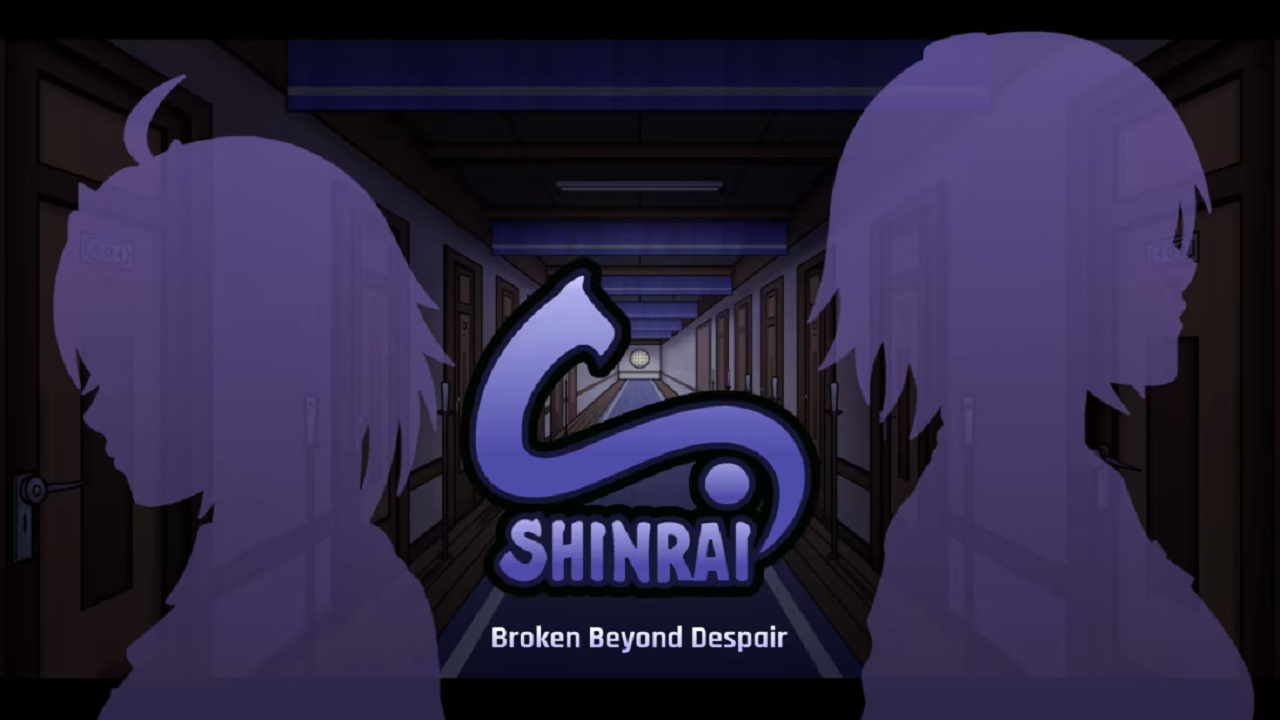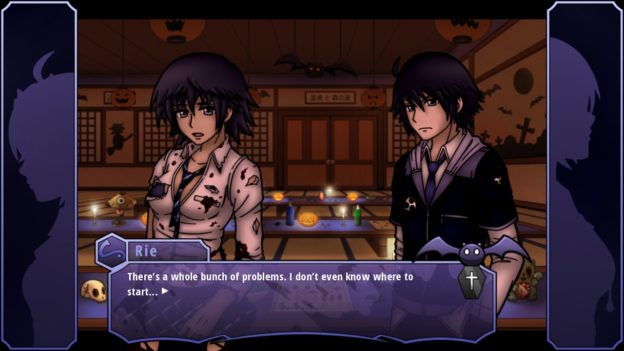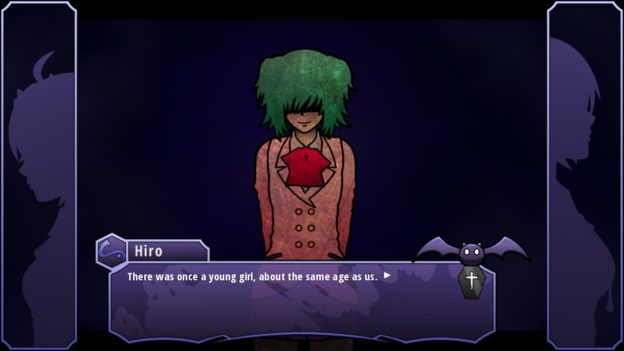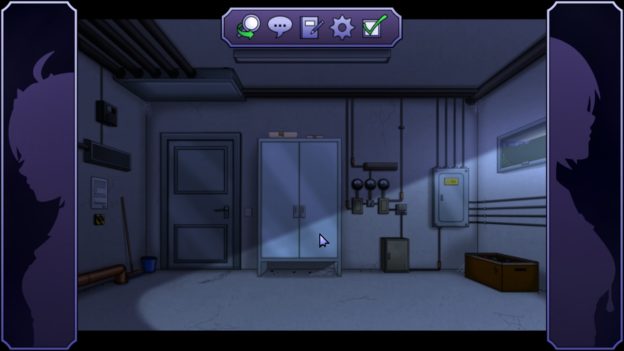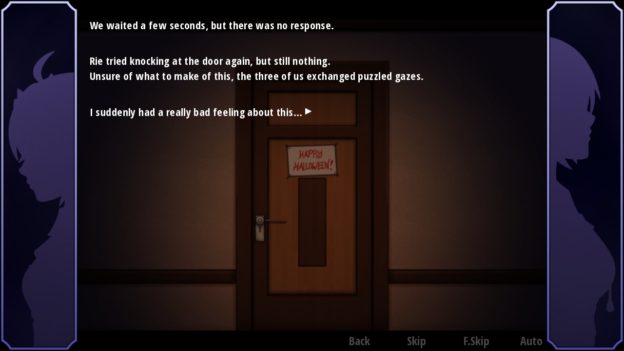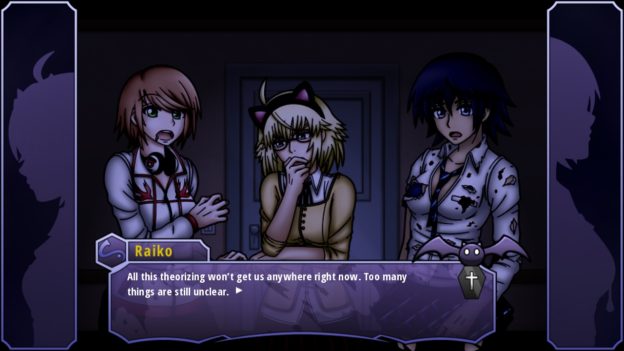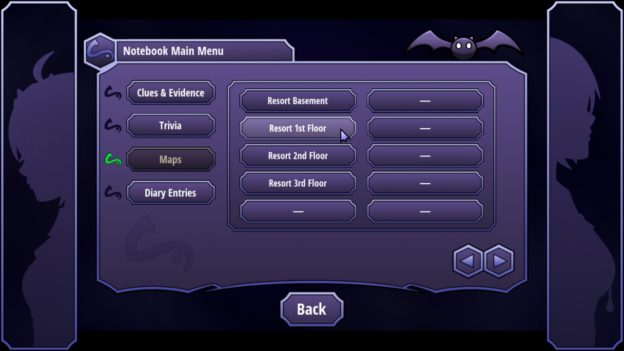Visual novels are very hit and miss and hard to get someone sucked in from the get-go, especially if you aren’t a natural die-hard fan of this genre. I have a soft spot for a handful of visual novels, so when I came across SHINRAI – Broken Beyond Despair, I was very intrigued to see if this might hook me in.
I’ll admit, most of the visual novels I adore are focused on relationships and romance. So to dive into one centred around a “who done it?” murder case was a whole different tempo that I was all here for. Knowing prior that there are multiple endings, one being the true ending, was exciting. This meant the narrative wouldn’t be as linear as some visual novels, meaning my decisions would matter.
In SHINRAI, you mostly play as Raiko, “Your boring average middle schooler” – her words, not mine – as you attend a Halloween party at a secluded mountain resort. It all seems fun until the party becomes a literal night of horror when one of the attendees is found dead. It is then up to you and your remaining friends to find out who among you is the murderer…
One of the most important areas of a visual novel for me is the, uh, visuals. By this, I mean the art style used to accompany the text of the story. The art style and character models of SHIRAI look hand-drawn and remind me of those days when people would use DeviantArt to create their character for their personal Tumblr. I understand this is a specific reference, but if you know, you know. The entire presentation of SHIRAI feels cheap and rough around the edges. Usually, the art style draws me into a story further. However, the visuals in this game did the opposite.
Art style issues aside, the characters themselves are a standout of the game. They all feel unique from one another and realistic. The included character profile pages add further depth from the offset and sprinkle some humour with the information they chose to provide. As Chekhov states in his rule for plays, “If in Act One you have hung a pistol on the wall, then in Act Two or Three it should be fired.” I took this rule into SHINRAI, especially when Henjin, whose profile states he dislikes bad driving, and then five minutes later is complaining about a terrible truck driver he passed. This led me to remember as many weird dislikes as possible in the hope the story will use them in the narrative somehow. I was disappointed to find that Kotoba’s dislike of ‘wearing underwear’ never had its time to shine in the story.
As Raiko, you are usually given three dialogue options when prompted. These choices often fall into one of three categories, a positive statement, a negative statement, and an absurd or inappropriate one. Being the serious reviewer that I am, 90% of my choices were ridiculous ones. Most garnered some hilarious responses that then did nothing for the story.
I realise that this will feel like a redundant statement, but there is a lot of reading in SHINRAI. I mean this in the sense that there are far too many moments where the screen will be plain and full of paragraphs of text. This happens each time there is any narration or internal monologues, which could have easily been accompanied by character reactions or the scenery it was describing. These bland moments took me out of the flow of the story, and at times, I found it very hard to get back into it. Don’t get me wrong, the writing is highly descriptive and paints a great image in your mind. However, the visual aid of an actual image could have helped minimise the lengthy pieces of text that were instead paired with a blank screen.
Another issue I have with the text is that the full window of speech or text does not appear at once. Sometimes it appears paragraph by paragraph or one sentence at a time. It is inconsistent with this, and at times I would find myself re-reading a whole section of dialogue, only to realise that I wasn’t reading a new piece of speech, but instead, a single sentence had been added onto the end of another.
Outside of reading text, you have the various menus to navigate and the investigator mode. In the menus, you can access more in-depth character profiles, alongside your notebook, where you store your clues, trivia, and any other useful information you may want to refer to. This is a handy companion to have at any time throughout your campaign. With investigator mode, you use a cursor to select items of interest that can provide extra information or prompt conversations/events. You also have the choice to speak with anyone who is in the area with you at any point for additional clues or help.
SHINRAI – Broken Beyond Despair has an interesting enough narrative. But poor quality visuals and lack of variety make for a hard story to become fully invested in. There seems to be too much text and waffle, and I get the feeling that quantity was preferred over quality in the story. On the whole, the game feels rushed and unpolished. I think I’ll stick with my romance VN’s.
Review: SHINRAI – Broken Beyond Despair (Nintendo Switch)
Average
SHINRAI – Broken Beyond Despair has an interesting enough narrative. But poor quality visuals and lack of variety make for a hard story to become fully invested in. There seems to be too much text and waffle, and I get the feeling that quantity was preferred over quality in the story. On the whole, the game feels rushed and unpolished.

